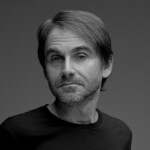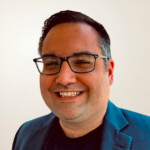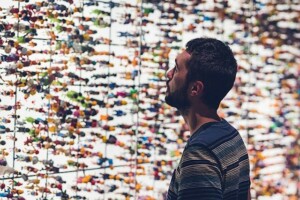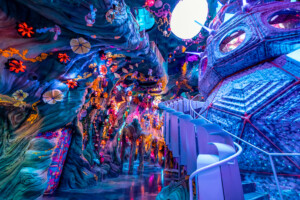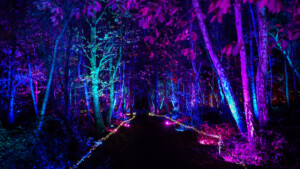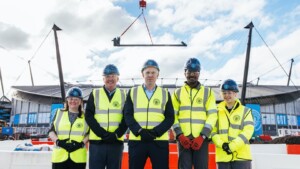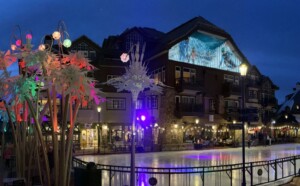MNC (Media Nusantara Citra), South East Asia’s largest media group, is planning a $500m theme park in Java’s Lido Lakes region. The site is some 65 minutes from Jakarta. Ex-Disney Imagineer, Ryan Harmon, describes the project as ‘unlike anything you’ve seen at any other park.’ His team at Zeitgeist Design and Production have been retained to realise the plans.
%20(500x429).jpg) Ryan Harmon and Zeitgeist
Ryan Harmon and Zeitgeist
Blooloop spoke with Ryan Harmon and MNC’s Seth Wang about the project, the possibilities and the challenges of such an ambitious undertaking in Indonesia.
Zeitgeist Design and Production is a new venture for Ryan Harmon, who has held creative management positions at Walt Disney Imagineering, Universal Creative, Warner Bros. Recreation, Caruso Affiliated, Story Dept. and Delaney-Harmon, Inc.
“I’ve had a very rare opportunity to work hand in hand with a lot of the icons of our industry, ” he says. “Whether it was Bob Weis, who is now heading up Shanghai Disneyland, or Tony Baxter, or Gary Goddard or Tony Christopher, or Bob Rogers, or Craig Hanna from Thinkwell. I’ve learned so much, and I’ve been able to start meeting people like Seth from overseas.
Harmon is clearly excited about this new project and the opportunities, as well as the challenges, it offers.
“It just became very exciting to me to not have to rely solely on those owner-operators or design firms. To have the opportunity to put together a team that I feel is extremely competent and fun to work with. And be able to make our own decisions. And develop the parks and projects the way we’d like to do it. Taking everything I learned and putting it all together.
“We had an opportunity a few years ago to work on a park in Incheon, South Korea, called Robotland. Last year, we developed a park in Huai’an, China. This was based on Journey to the West. Now Seth’s given us this amazing opportunity to work on this park for MNC.
“So we’ve assembled a very talented and experienced team, and this is exactly what I want to be doing. It’s fun and challenging and hopefully we’re going to do something really different and ground-breaking.”
A mix of high-tech rides and real adventures
The park is scheduled to open in 2020. Specific details of the rides and attractions are not yet being released and the park’s name is also being kept under wraps until a later date. However, according to Harman, there will be a range of rides, shows and attractions for all members of the family. Some will be high-tech and media-based, and some will encourage people to have a real tactile adventure.
Bogor’s nickname is The Rainy City, so a lot of time has gone into the logistics of how to get people from attraction to restaurant to retail floor without getting too wet.
(1).jpg)
“What makes this project special is that we have an amazing site, unlike any other theme park site on the planet, ” he says. “Most theme parks are flat pieces of land, and our park is in a beautiful valley, not unlike something you might see in Lord of the Rings or the Hobbit movies.
“So, we have a real canyon and cliffs and forests and waterways, and it’s right on the equator. We’re going to be able to grow spectacular trees and flowers and the whole botanical garden aspect will be a large part of the experience here. We’re going to have giant waterfalls, and amazing flora from all over the world.
“So, I think just the site itself will set this park completely apart from anything else you’ve ever seen. And, then when you layer in our rich story and amazing attractions, it’s just going to be unlike anything you’ve seen at any other park.”
Enriching the natural habitat
While the landscape is idyllic, the Bogor site is currently being used for rice paddies and banana plantations. As a result, there are a few conservation and ecological constraints usual in an area of natural beauty.
“We’ll actually be restoring a lot of the natural flora and bringing in some of the beautiful trees and blossoming vegetation that would have been native to that area before it was denuded for agriculture back in colonial times.”
He admits there are challenges:
“Right now, for example, we’re doing a civil engineering work which normally would come later in the theme park design process, but we’re doing it up front, because we want to truly understand the site, and design our rides and shows to work with the land.
“In fact, we’ve allowed the land to almost tell the story of the park as well. When we realised that we had this amazing site, we kind of asked ourselves, what would happen over here? Who would live here, and what would their story be? And so, in a way, that’s how we developed the whole back-story for the project.”
.jpg)
(Above: Ryan Harmon with members of the MNC and Zeitgeist teams)
Rejecting Western IPs in favour of compelling, original stories
MNC operates four free-to-air TV channels as well as twenty-two channels created and produced by MNC and broadcast by Pay-TV. It also has a number of associated media businesses supporting MNC’s core business: radio, print media, talent management and a production house.
Unusually, rather than buying in a well-known IP or brand, the project’s team has decided to create its own local-based stories. Furthermore, in a reversal of the customary procedure, it will roll out the brand from the theme park to MNC’s media network.
“There was a discussion early on about that, ” says Ryan Harman. “My personal feeling is that if you look at the most beloved and longest lasting attractions in the world, none have IPs attached to them. The ones that have had IPs get long in the tooth. People are looking for the fast dollar to associate a new park or attraction with some US franchises, but it’s always weird to me: why would I go out to Dubai to ride on an Ice Age ride?
Something totally different
“There is a plethora of IP-based projects coming into this region: Universal Studios Singapore; Fox in Kuala Lumpur; there’s a Marvel project going to Jakarta. We all agree that we want to to stand out from that crowd. We plan to do something fresh and based on original stories. Something that would be timeless and could potentially last forever. And, not be a slave to whether or not the studio’s going to make a new movie based on that franchise in the next few years. So we think ours will stand out from the crowd as being something totally different from everything else that’s going in right now.”
Seth Wang of MNC pointed out that, from his company’s perspective, it was infinitely more desirable to use its own original content, popularising that content through its media channels, rather than representing the creations of Hollywood and the Western world:
“Or to become another holding of Disney’s creations, ” he says. “So we decided not to use Western IPSs; instead of that, we create our own original stories and let them be told by the beautiful Java volcano.”
Some of the park’s content will be high-tech. There is also a plan to use wristbands and smartphones to “bring the tales to life.”
The importance of mobile and mobile messaging
 Indonesians are some of the most active users of messaging and chat apps in the world, with an average of 4.2 messaging apps installed on their smartphones. Messaging apps are also a significant part of their everyday behaviour. 97% of mobile users in Indonesia access messaging apps multiple times per day and 39% prefer them as their main channel of mobile communication over SMS, social networking, voice messages and emails.
Indonesians are some of the most active users of messaging and chat apps in the world, with an average of 4.2 messaging apps installed on their smartphones. Messaging apps are also a significant part of their everyday behaviour. 97% of mobile users in Indonesia access messaging apps multiple times per day and 39% prefer them as their main channel of mobile communication over SMS, social networking, voice messages and emails.
“People communicate with each other using mobile apps: WhatsApp, WeChat, or with social media like Facebook, ” explains Wang. “Almost everybody owns a mobile phone. So we want to use that technology not only for payment, but also for interactivity, and a customer loyalty programme.”
Mobile marketing is another key part of the plan.
“We’ll incorporate games, interactivity, personalisation using RFID; using augmented reality; some combination of playing games and having interaction on your phone; or with a wristband, or with actual tactile things within the park. We really want to be a next generation smart theme park, ” says RyanHarmon.
Incteasing demand for leisure and Entertainment
There have been theme parks in Indonesia previously. Some of which have succeeded, and some of which have failed very quickly for a number of reasons. Wang mentions one in particular which never got out of the planning stage:
“There is one in particular that was designed, but it never came to the next step, because they hesitated. They didn’t follow the real core story. They were confused about the IP they used and not confident about what they were designing.”
He says that it is vital to accurately assess and predict the growth of the middle-class income. This is something he feels will be on the increase until at least 2020.
“Transport between the islands is not convenient, but the major island is Java, which already has half the population, with a population of 125 million.
“So we are thinking about the next few years, there will be more demand for amusement and entertainment parks. We have a toll road from Jakarta city centre. There is a new middle-class urban development, which is only 65 to 70 minutes away, and an existing railroad station just 200m away from our main gate.”
The park is about 40 hectares in size, but the team is leaving room for expansion. Two hotels and a retail centre will be located just outside the main gate.
.jpg)
The purpose of the Zeitgeist team’s trip to the IAAPA Expo in Orlando this year is to take the list of attractions and start talking to potential vendors.
“We’re looking at a nice combination of experiences. Some will be modern, technological digital and media based. Others are classic, and just great rides or experiences.”
Letting the landscape tell its own story
Without giving too much away, Ryan Harman expands on the relationship of the landscape to his vision for the park’s storyline.
“The story is really based on the land itself. The first thing we did was to take the topography report from the client, and make a model. When it arrived, our jaws dropped. We knew the site was dynamic, but we didn’t know it had, basically, a grand canyon running through the middle. There were 120 foot drops that dove down then came back up on the other side.
“We brought in a master planner to start developing the site. I asked them, show me where we can have 5 x15 acre plots where we can actually have land. Once we started doing that we said, wait a minute. This one is over here, and this one could be inhabited by this type of people and have this kind of design. And this one’s in a canyon, so what if this was about this? And, this one could be a forest, and this one on the water. So it really started to put itself together and dictate what the stories for each zone are.
A very deep story
“And, we worked with some writers and some amazing designers. Each zone evolved to what we have today. So we have, basically, five lands of different tribes or communities, that all come together in one central hub space of the park.
“It’s a very deep story. The park is, unlike other theme parks. It has one single story, not unlike a first-person video game or a motion picture where each land is a different perspective or chapter in that story.
“I’ve not experienced any place quite like what we’re doing here.”
MNC is already considering a second gate park: a themed water-park, for which the climate is ideal.
Wang says there are no plans to expand outside Indonesia at this point. “The Indonesian population is already very high volume, so we’d like to focus on the local area first.”




